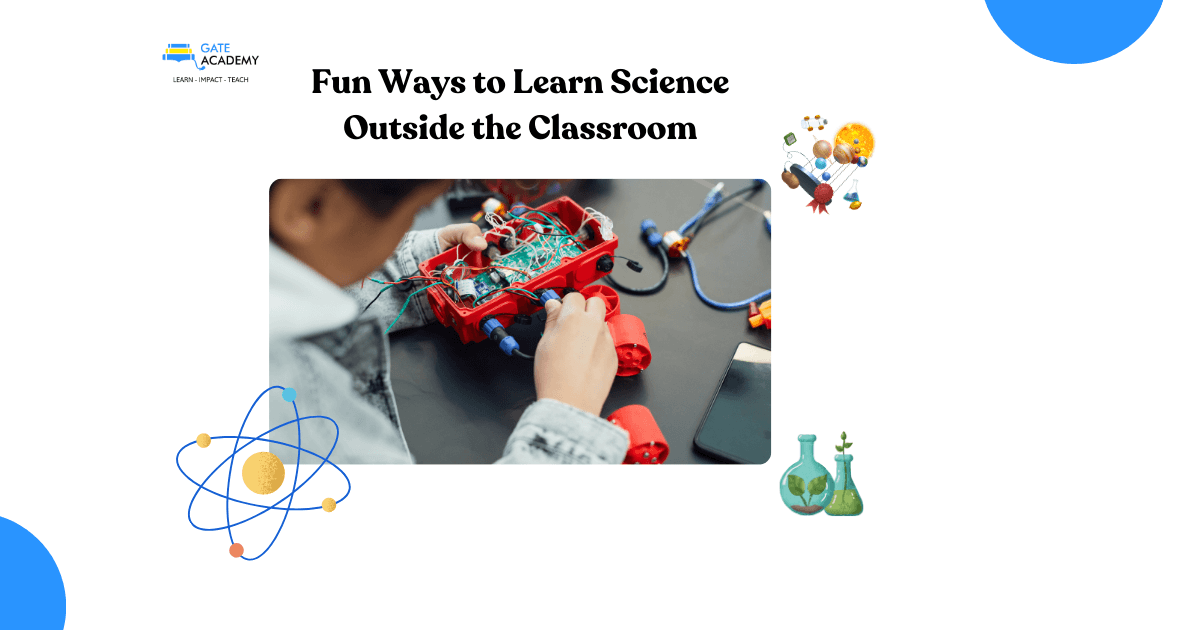Boosting Science Curiosity: Fun Ways to Learn Outside the Classroom

GATE Academy
-Aug 26, 2025

Science is not limited to the four walls of a classroom. From the way food is processed to how solar panels power homes, there are countless examples of science at work in everyday life. Making these connections helps students see why what they learn in school matters. Here are some simple and affordable ways to spark curiosity:
1. Turn your home into a mini-lab
Show how heat changes food by frying food or boiling eggs. Test how salt preserves fish. Try simple battery and bulb experiments to explain electricity. These small, low-cost demonstrations make science visible.
2. Explore local places of interest
Visits to science centers, local farms, markets, or factories show how ideas are applied in real life from food preservation to renewable energy projects. Even a trip to a mechanic's workshop can become a physics lesson on motion and force.
3. Use nature as a classroom
Weather patterns, plants, and insects are perfect for observation. Students can track how quickly clothes dry under the sun, watch bean seeds sprout, or record how shadows change during the day.
4. Leverage mobile apps and radio programs
Many science radio shows and affordable mobile apps explain topics in interactive ways. Apps like Star Walk for stargazing or YouTube videos on DIY experiments work even on low-bandwidth phones.
5. Encourage hands-on building and fixing
Let children help repair simple household items, build kites, or make toys using recycled materials. These projects build creativity and problem-solving skills while showing the practical side of science.
Science is more than facts to memorize. It is a way of thinking, asking questions, and solving problems. By turning everyday activities into science lessons, parents help students stay curious, confident, and ready for the next school term.
Give your child the right guidance to turn curiosity into top grades, hire a GATE Academy tutor today.